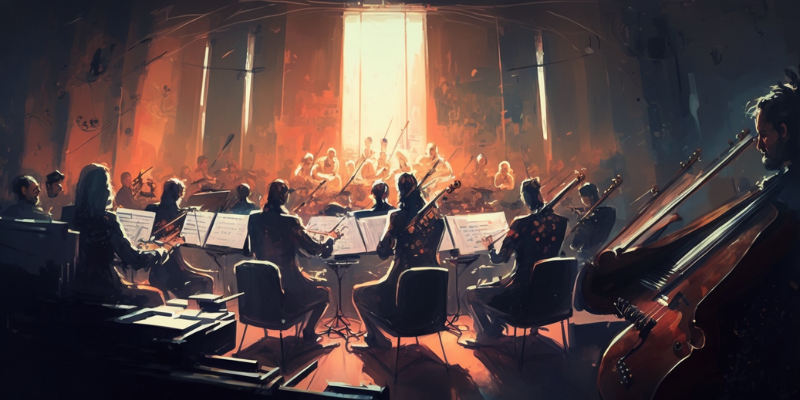Symphony of Code: Design Patterns as Musical Notes
25 Apr 2024
In the grand orchestra of software development, design patterns assume the role of musical notes, harmonizing to create a symphony of elegant and efficient code. Just as a composer carefully selects notes to evoke emotion and convey meaning, developers employ design patterns as the building blocks of software architecture, orchestrating solutions to complex problems with precision and artistry.
Setting the Stage: Understanding the Conductor’s Baton
Imagine a conductor standing before a symphony orchestra, poised with a baton in hand. Before the music begins, the conductor sets the tempo and directs each section of the orchestra, ensuring harmony and cohesion. Similarly, design patterns serve as the conductor’s baton in the realm of software development, guiding the structure and flow of code to achieve scalability, maintainability, and reusability.
From the stately elegance of the Singleton pattern to the dynamic interplay of the Observer pattern, each design pattern conducts a specific aspect of software design, directing the arrangement of classes and objects to produce a coherent and melodious whole. Like a conductor leading a symphony, developers wield design patterns to bring order to the chaos of software development, transforming disparate components into a cohesive composition.
Composing the Overture: What Are Design Patterns?
In the language of music, a chord progression or melodic motif serves as a design pattern, providing a standardized approach to creating musical phrases. Similarly, in software engineering, design patterns encapsulate proven solutions to common design problems, offering developers a repertoire of techniques for structuring and organizing code.
Consider the creational patterns as the opening notes of a symphony, laying the foundation for object creation and initialization. The Singleton pattern acts as the keynote, ensuring that only one instance of a class exists throughout the application, much like the recurring theme that anchors a musical composition. Meanwhile, the Factory Method pattern orchestrates the creation of objects, allowing subclasses to define the exact type of objects to be created, akin to the variations in melody introduced by different instruments in an orchestra.
Harmonizing the Themes: How I Have Used Them in My Code
Reflecting on my own coding endeavors, I’ve often found myself composing code like a symphony, weaving together design patterns to create harmonious and cohesive solutions. When confronted with the need for flexible object creation without exposing the instantiation logic, the Abstract Factory pattern emerged as a powerful composition, orchestrating the creation of families of related objects with ease and elegance.
In another composition, where I sought to decouple the sender and receiver of requests, the Command pattern conducted the flow of communication, encapsulating requests as objects and allowing for parameterization and queuing of requests. These experiences illustrate the versatility and utility of design patterns, empowering developers to compose software solutions that resonate with clarity and efficiency.
Crescendo of Creativity: Unraveling the Symphony
In conclusion, design patterns serve as the musical notes that compose the symphony of software development, guiding developers in crafting solutions that are both elegant and efficient. Just as a skilled composer orchestrates a symphony to evoke emotion and captivate audiences, software developers leverage design patterns to orchestrate code that is not only functional but also expressive and resonant.
So, the next time you embark on a coding journey, envision yourself as the conductor of a grand symphony, wielding design patterns as your baton to guide the composition of code with precision and artistry. And remember, just as every symphony is unique, so too is every software solution, each imbued with the creativity and ingenuity of its composer.
Please note that I used ChatGPT to improve grammar and spelling in this document.